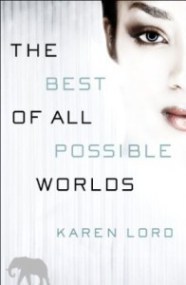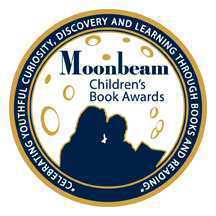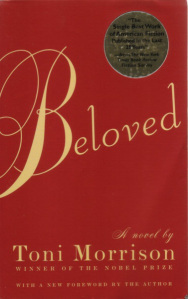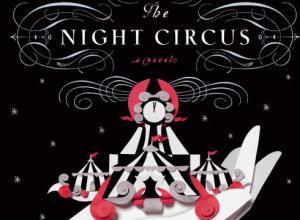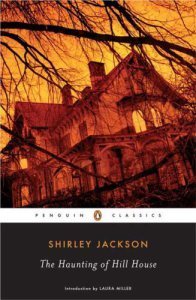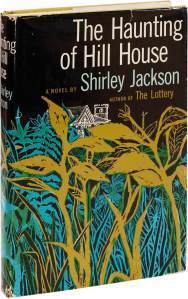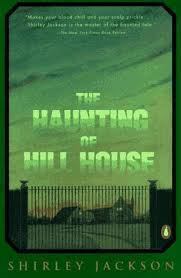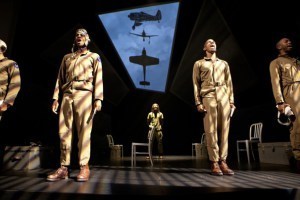Craig Laurance Gidney's Blog, page 65
December 8, 2012
REVIEW: The Best of All Possible Worlds by Karen Lord (Spoiler Free)
A successful Science Fiction romance is a difficult thing to achieve. Part of it has to do with SF fans not wanting the romance part to interfere with scientific extrapolation. (In my experience, Romance readers are far more catholic in their tastes). The potential for camp (I’m thinking of Jacqueline Sussan’s Yargo), and the marketing of such a book add yet more layers.
Karen Lord’s second novel is completely different from her debut, the excellent retold/remixed Senegalese folktale Redemption in Indigo. It’s a love story hidden in and around a LeGuin-style anthropological quest/planetary travelogue novel. Mostly narrated in the first person by the vivacious and chatty government biotechnician Grace Delarua (with lots of clever asides and some exclamation points), The Best of All Possible Worlds follows the fate of the stoic, telepathic Sadiri, who have been relocated to Cygnus Beta after a viscous and unprecedented massacre on their home planet. Cygnus Beta is a sort of galactic dumping ground for orphans of the three strains of humanity (the Sadiri, the Ntshune, and the Zhinuvians). As such, there are trace elements of all cultures seeded and hidden in the large planet. Since the Sadiri population has been mostly decimated, they feel that they have to build up their population. Grace is assigned to assist the Sadiri in their quest to find suitable cultures and mates on Cygnus Beta.
Grace’s main contact is Dllenahkh, who is the de facto leader of the mission, which mostly consists of visiting various settlements and cultures on the planet, and doing genetic testing. In this sense, Lord’s novel is almost a ‘mundane,’ or slice-of-life SF novel. There are no superheros or monsters, and the book has a leisurely, episodic pace—kind of like life. Because of that, Lord mostly focuses on the bizarre and intriguing chemistry between the impulsive Grace and the inscrutable Dllenahkh. Dllenahkh is neither a brooding hero or a Spock-like ascetic. He is a believable alien with odd flashes of recognizable human behavior that seem to surprise even himself.
Plotwise, there are a lot of incidences and strange, ‘sense-of-wonder’ set pieces, which I won’t spoil. They aren’t just there for window-dressing for the Grace-Dllenahkh love story; various ethical issues are addressed, from the issue of ‘cultural purity’ to religion, to the issues around telepathy and privacy. (Because of this, the plot does tend to meander). Additionally, Lord does through a bone or two to techno-fetishists—with shades of Iain M. Banks Culture novels. But The Best of All Possible Worlds is ultimately a relationship novel. No, it’s not a Nicholas Sparks novel set in a far future; imagine Jane Austen at her most psychologically astute as written by Ursula LeGuin at her most cerebral.


November 29, 2012
FROM WHERE WE SIT Wins a Moonbeam Award!
The YA anthology from Tiny Satchel Press, FROM WHERE WE SIT: Black Writers Write Black Youth (ed. Victoria A. Brownworth) won a 2012 Moonbeam Children’s Book Award, which celebrates Youthful Curiosity, Discovery and Learning through Books and Learning.The book won the Silver medal in the Young Adult Fiction – Historical/ Cultural Category. (My stories, “Circus Boy Without A Safety Net” and “Bereft” are featured in this book).
Congratulations to Tiny Satchel Press, Victoria A. Brownworth, and all the other authors!


November 25, 2012
Copy for Promotionial Postcard for BEREFT
November 11, 2012
Topaz is my birthstone
My heart is a topaz.
Fiery yellow and fierce, it flares and nourishes my body.
It thrives in the dark regions of my chest, a hidden crystal sun.


October 25, 2012
Favorite Spooky Reads: Beloved by Toni Morrison
Beloved may be the only horror novel to win a Pulitzer Prize. And it is a horror novel, in my opinion. It makes use of the tropes supernatural gothic fiction (in this case, a vengeful ghost) to examine the dehumanizing effects of America’s great sin, the Peculiar Institution of slavery. Beloved is, of course, also a historical novel that takes as its jumping off point a historical footnote about an escaped female slave who murdered her own child rather than have her be raised in slavery. But Beloved, the spirit of the murdered infant come back as a young woman forms the bulk of the novel.
Sethe (perhaps her name alludes to Lethe, the Greek river of forgetting) has escaped with her four children from Sweet Home, a hellish plantation where slaves are routinely tortured. When the foreman, the sinisterly named Schoolteacher, finds her in Ohio (a slave-free state), he witnesses her slitting the throat of her unnamed infant daughter. He declares her a wild animal and not fit for slave service. The murdered child becomes a poltergeist, driving away both her sons after a few years with her wild antics. When a fellow escaped slave, Paul D, arrives at Sethe’s house, the ghost child is temporary banished.
Beloved comes back in corporeal form, as a young woman. Forget Samara (the video ghost girl of the Ringu trilogy) or the possessed Regan McNeil (The Exorcist) or even telekinetic terror Carrie White. Beloved could have them for a light lunch. Because Beloved is a cipher, and her agenda is never clear. She is endlessly hungry, for Sethe, for love, for experience, for sweets. Does she want to possess Sethe—both figuratively and literarly? Or does she want to destroy her? Beloved is every wrong thing about slavery and racism given form, and she will do anything—to fill her endless, aching and damaged need. Beloved is beautiful, seductive, perverse and brutal.
Morrison’s Faulkner language quivers and fractures in her attempt to capture the essence of this spirit. The imagery she uses is violent and disturbing—light, blood, sugar are invoked. Because Beloved has a strong historical subtext, its horror is even more powerful.


October 24, 2012
REVIEW: The Night Circus by Erin Morgenstern
The circus/carnival novel is a well-worn subgenre in the fantasy genre. Circuses are places where magic and mystery hide in plain sight, so they are a natural place for fantastic exploration. They come in various flavors, from the surreal (Angela Carter’s Fellini-esque Nights at the Circus) to the sinister (Katherine Dunn’s Geek Love) to the nostalgic (James Blaycock’s Land of Dreams). Erin Morgenstern’s much hyped debut, The Night Circus is not the most unique retooling of the circus trope (that belongs to Genevieve Valentine’s dystopian steampunk novel Mechanique), but it is addictive.
It’s an unabashedly romantic tale of rival magicians connected to a travelling circus around the turn of the century. Morgenstern’s language is sensual and bejeweled—a tad precious for some tastes. The passionate pas de deux between the magicians Marco and Celia isn’t half as interesting as elegant night circus that Morgenstern creates. It’s full of wonder and whimsy—paper animals that move, labyrinths, rooms of ice and room of scented bottles. The book moves at a languid pace, pausing to describe the rustle of a gown, the detail on a clock, the smell of caramel. Both Marco and Celia are unwilling pawns of their enchanter fathers; in spite of some moments of heated conflict, even that drama isn’t as important as the rich, dreamy atmosphere Morgenstern conjures. Her brocaded text reminds me of those Art Deco paintings by Erté. The Night Circus is a sophisticated fairytale for adult readers, free of irony and jadedness, and full of enchantment.


October 23, 2012
Favorite Spooky Reads: The Haunting of Hill House
Shirley Jackson’s 1959 novel, The Haunting of Hill House, updated the ghost story, and used its various tropes to create a new kind of character study. (Forget those douchetastic ghosthunter shows—this team has a suave elegance to their work). It’s mostly the story of Eleanor, a lonely, mousy misfit of a woman who slowly and disturbingly falls in love with the foreboding, architectural monstrosity known as Hill House. Eleanor has an active imagination and never seems quite connected with the mundane world. She comes alive in Hill House, where she is a part of parapyschological research team. And the house, seemingly, seems share her affections. It communicates with her in ways that are scary….and oddly, tender. The reader wants Eleanor to join with her beloved, and escape from it at the same time. Jackson creates marvelous secondary characters—the brash, chic probably lesbian artist Theo, the bratty playboy heir to Hill House Luke, and doddering Professor who heads up the research team. She also adds a kind of mordant humor, such as the dour doomladen housekeeper. Jackson’s prose is written with a delicate beauty that suffuses even the more suspenseful set pieces; neither movies that used the book as source material manage to capture that sensibility. The Haunting of Hill House is novel that stays with reader. It leaves you with deep, lingering horror.


October 17, 2012
Writing BEREFT: My journey in 8 points.
1. I do well with an outline
a. The outline is a guide, and therefore very loose. Not set in stone.
2. I can write from 300-500 words after a day of work and 500- 1000 words on the weekends.
3. Scrivener really helps. Some features I used:
a. Word countdown sessions, where you set your goal and as you type, the word count goes down. It makes writing a lot less intimidating.
b. Read aloud—where a robovoice reads what you wrote aloud, and helps catches mistakes
4. Wordless music. My favorite is ambient/postrock/neoclassical. It puts my into the world I’m trying to create.
a. When stuck, putting on a silly song (like L’il Mama’s “Lip Gloss” or Gwen Stefani’s “Hollaback Girl”) resets me. (And I be lovin’ it, lovin’ it)
5. Reading blogs and tweets about other writer’s journeys can be inspiring!
6. Reading blogs and tweets about other writer’s journeys can be depressing!
7. Keeping a concurrent journal where you can write down phrases and ideas and brainstorms while you write really helps
a. Carry a journal (if not The Journal) with you everywhere. Or use your smartphone/tablet to jot down any ideas that come to you immediately.
8. Having a friend on speed dial who can talk you down during those hard moments really helps!


October 12, 2012
FLY: A play about the Tuskegee Airmen
I saw the play FLY, about the Tuskegee Airmen at the Ford Theater* on October 9 with my brothers. It was a gift from our mother, who had already seen the play. The play follows 4 aspiring pilots as they through the rigorous training, helmed by their racist instructor. Each of the four men come from different backgrounds: someone from the Islands, a zoot-suited ne’er do well from Chicago, a Garveyite “race” man, and the narrator, a wet-behind-the-ears kid from Long Island. The fight scenes were carried out using projected screens of aerial photography, a light show (to show the bombing) and miming. The whole play was framed/augmented by a “Tap Griot,” an actor who performed percussive dances and occasionally narrated certain scenes, much like a Greek chorus. The acting was strong and the staging innovative, as it illuminated a page from African-American history.
*Yes, that Ford Theater; the box where Lincoln was murdered stands empty and draped with an American flag


October 7, 2012
Orycon 34 Schedule
I finally got my schedule for Orycon 34, which happens from November 2-4 in Portland, Oregon.
Three Thumbs Up
Morrison Fri Nov 2 2:00pm-3:00pm
Book and movie reviews have their own special pitfalls. When to be
snarky, when to be nice, developing a style, filling a niche, and how to
stand out in a sea of freely-offered commentators and reviewers in print
and on the web.
(*)John C. Bunnell, Aaron Duran, Craig Laurance Gidney
Group 2 Horror Short Story
WW1 Fri Nov 2 4:00pm-5:00pm
Wendy N. Wagner, Craig Laurance Gidney
Writing the Other: Races and Cultures
Morrison Fri Nov 2 5:00pm-6:00pm
Speculative fiction often takes steps toward being more egalitarian, but
there are still huge challenges ahead. Issues of appropriation, respect,
stereotypes, and taking chances. How to get educated and still write
naturally and from the heart.
J. A. Pitts, Stoney Compton, Alma Alexander, (*)Grá Linnaea, Craig
Laurance Gidney
Craig Laurance Gidney’s reading
Grant Sat Nov 3 11:00am-11:30am



